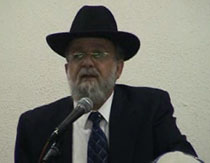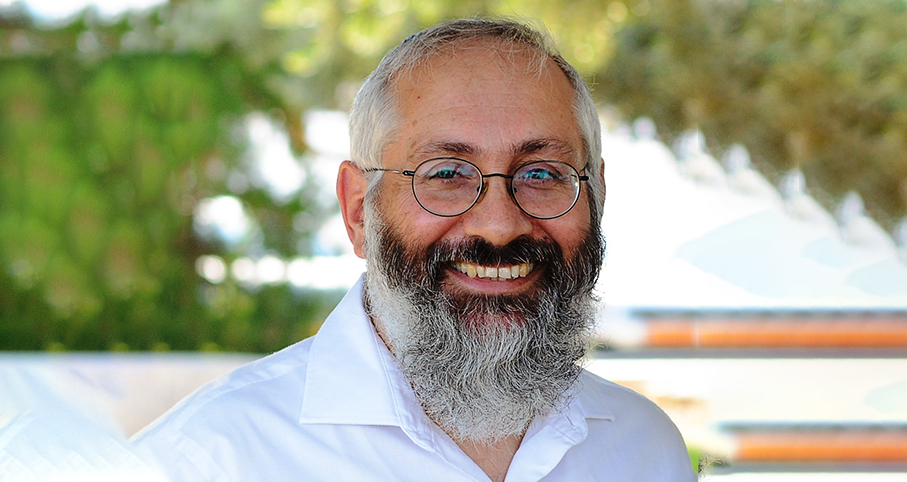Beit Midrash
- Sections
- Chemdat Yamim
- Bemare Habazak - Rabbis Questions
Answer: The answers are basically evident if one understands the roles of KT and Barchu.
The main reason to recite Barchu again at the end of tefilla is for the sake of latecomers who missed the main one (Rama, Orach Chayim 133:1). For that reason, Nusach Ashkenaz does not repeat Barchu on Monday, Thursday, and Shabbat, due to the assumption that latecomers answered Barchu at the aliyot of Kri’at HaTorah (see Rama ibid.;). While it is customary in Israel to insert Barchu after Ein Keilokeinu, Barchu meets its purpose earlier or later in tefilla at least b’di’eved, as happens in Kriat HaTorah or in communities which do not recite Ein Keilokeinu daily. This should be so even according to Nusach Sephard/Eidot Hamizrach and in regard to the Motzaei Shabbat mistake, as this is still a Barchu at the end of davening, even if it moved up one Kaddish. (Since Kabbalistic considerations are behind the minhag to repeat Barchu every day (see Kaf Hachayim, OC 133:1) we cannot rule out the possibility that it should be repeated if not said at the exact right place, but we doubt that.)
Different Kaddeishim have different functions. The unique part of the Kaddish Shalem known as KT is the request that Hashem accept our joint prayers favorably. This relates to the joint Shemoneh Esrei, whether the silent one at Maariv or chazarat hashatz at the other tefillot (see Rama, OC 55:3 and Mishna Berura ad loc. 22). Therefore, it seems evident that KT is effective b’di’eved any time after Shemoneh Esrei, and there is no need or justification to repeat it.
However, there might be a significant dissenter regarding KT before V’ata Kadosh. Chief Rabbi Y. Yosef writes (Yalkut Yosef 132:8) that if one recited KT before before Ashrei/U’va L’tzion (the morning version of V’ata Kadosh), he should repeat it after U’va L’tzion. This is based on the assumption that Titkabel applies not only to Shemoneh Esrei but also to U’va L’tzion, to the extent that if KT preceded U’va L’tzion, another KT is needed. Indeed we do find Titkabel for a non-Shemoneh Esrei prayer – Selichot. On the other hand, his proof that Uva L’tzion warrants its own KT seems to actually be a disproof, as we will now see. He cites the Eliya Rabba (OC 693:5) who says that at Ma’ariv of Purim, KT is said twice, before Megilla reading to cover Shemoneh Esrei, and after the Megilla for V’ata Kadosh. The problem with this proof is that while the Mishna Berura (693:1) does cite the Eliya Rabba, he also cites the Magen Avraham, who says that Titkabel is said only in the Kaddish that precedes the Megilla, and the minhag of the great majority of communities is like the latter. In other words, we see that KT before V’ata Kadosh/U’va L’tzion suffices.
Perhaps Rav Yosef would agree not to repeat KT when it was done before V’yehi Noam/V’ata Kadosh of Motzaei Shabbat, due to the unique nature of those tefillot. They are recited to push off the end of davening in order to delay the return of souls to gehinom after Shabbat (see Tur, OC 295). The simple implication is that the point of return is after KT ends our tefilla. If so, if one prematurely said KT before those tefillot, there might be no reason to say them. While our intuition suggests that once the tefillot were instituted, they should be said anyway, its recitation is likely not important enough in that case to warrant a repeat of KT for its sake.
We posit then if one mistakenly recited KT on Motzaei Shabbat before the special tefillot, which include sections from Tehillim and elsewhere and requests, they would be followed by Kaddish Yatom. If no one wants to say Kaddish Yatom, the tefilla continues with Aleinu.

Bemare Habazak - Rabbis Questions (627)
Various Rabbis
155 - A Mourner Serving as Chatan Torah
156 - Mistakes in the Order of Kaddish and Barchu
157 - Undoing Mistaken Early Acceptance of Shabbat
Load More

Ask the Rabbi: Escorting Husband Returning from Hospital on Shabbat
Rabbi Daniel Mann | Sivan 5785

Ask the Rabbi: Scratching Improperly Parked Cars
Rabbi Daniel Mann | Iyar 5785

Ask the Rabbi: Drawer with Aluminum Foil Roll
Rabbi Daniel Mann | Cheshvan 5786

Ask the Rabbi: Must One Give his Apartment for Free?
Rabbi Daniel Mann | Elul 5785

Rabbi Daniel Mann

Ribbit in a Loan from an Irrevocable Trust Fund
Adar 7 5777

Bikur Cholim by Electronic Means
Shvat 1 5782

Encouraging a Child to Criticize His Parent
5774

























